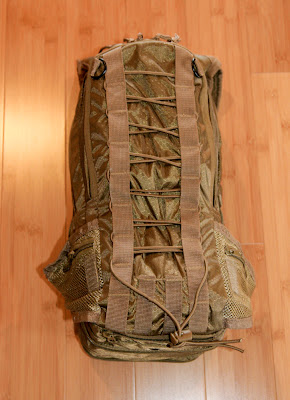As mentioned in my previous blogs, I have been in the market for a scope to mount atop my AR15. The first scope tested was the KonusPro M30 1.5-6x44mm by Konus Optics, however, it was rejected due to inconsistent adjustments and failure to return to zero after large adjustments. I then tested the Vortex PST 1-4x24mm with the MRAD mil scale/mil adjustments. I didn't field test this scope because I didn't feel the need to. The MRAD mil scale was so fine that I had a hard time in quickly picking up the reticles without the illumination being on. Since this rifle is primarily being used for quick shooting from 25 to 300 meters, I wanted a sight that I could quickly engage targets with (under 3 seconds or so).
THE AIMPOINTS:
I went back to the shop where I had purchased the Vortex from and was in the process of returning the scope when I saw the Aimpoints. I decided I had nothing to lose by picking it up and giving it a look, so I did. Then I remembered how when I was in the military, we used the Aimpoints (M68) with good effect out to 300m. I picked it up and turned it on. Just as I remembered it... not bad. I vaguely remembered someone on the internet complaining about how the red dot was difficult to see in bright sunlight, so I took the scope outside and found no problems picking out targets, even targets reflecting brightly in the sun. I returned back inside, whipped out the iPhone and researched the particular model I was holding (the Aimpoint PRO - Patrol Rifle Optics) vs. a EOTech EXPS3-2 and this is what I found out:
 |
| Aimpoint PRO EOTech EXPS3-2 |
• 30,000 hour battery life (over three years of continuous use at output level of 7) vs EOTech's 600hrs
• waterproof down to 150' vs EOTech's 33'
• 1-2MOA dot vs EOTech's 2-1MOA dots surrounded by a 65MOA ring
• built-in lens covers vs no lens covers on the EOTech
Both are excellent sight and offer features the other doesn't have. For example, they both have extremely rugged designs and both come with mounts. They both co-witness to iron sights and both have proven themselves in combat and in law enforcement. However, the above mentioned features are what sold me on the Aimpoint PRO. I made the purchase.
 |
| My new Aimpoint PRO Patrol Rifle Optics |
Once I got home, I mounted the Aimpoint onto my AR15. I positioned the sight so that it provided good eye relief and tightened the mount onto the picatinny rail. Per the instructions, I turned the mounting screw until I heard three (3) clicks from the self-torquing screw. Perfect, a nice solid mount.
 |
| Aimpoint mounted on my AR15 |
 |
| Front 3/4 view of the sight |
 | |
| This is the self-torquing screw. Turn it until it clicks three (3) times and you're done. |
 |
| Front view. There is a clear sticker on the front lens cap that has the in-service date on it. Hard to see in the picture but it's there. |
 |
| Right side view of the Aimpoint PRO. There is a plastic piece that hold the elevation and windage caps in place during zeroring. On this model, the ON/OFF switch is the same as the miitary's M68. |
 |
| Top view. Yes, I've already scuffed the top of the ON/OFF switch. |
 |
| Front view (again), but I really liked how the rail was reflected on the front lens element. |
 | ||
| This is the setting (intensity level 7) that will get you 30,000 hours of continuous use. As you can see in the picture, even at level 7 you can still pick out the red dot on a sunny day. |
The red dot CAN clearly be seen in direct sunlight against a white surface, but the limitations of my camera was unable to capture the red dot against a white background so I did not include a picture. Finished for now. I will put up an update once I get a chance to take it out to the desert to zero the sights.









































